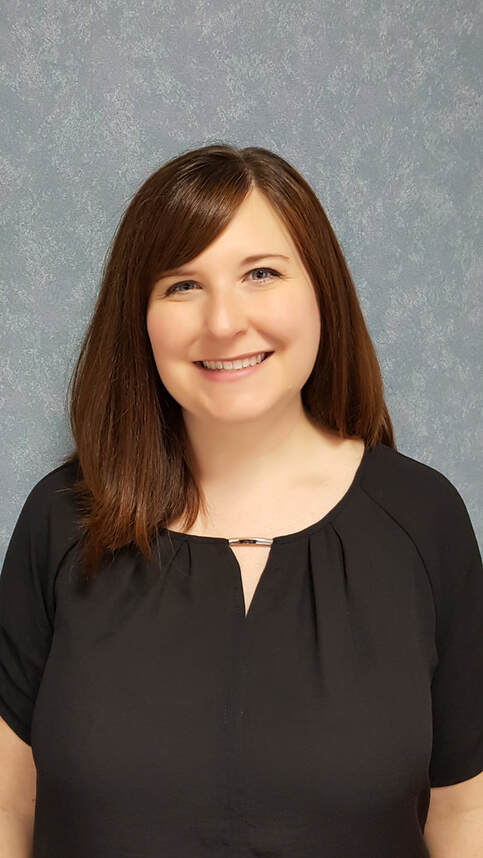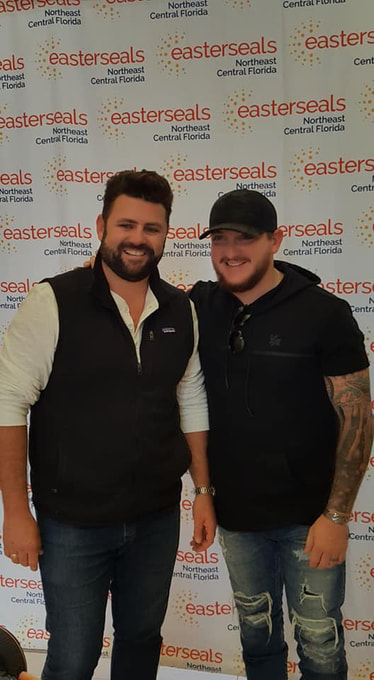|
2/25/2020 Welcome to autism 101! by Dorothy Lefford, Vice President - Clinical Services at Easterseals Northeast Central FloridaRead Now The last decade has brought greater awareness and advances in understanding autism. Each person is unique just as the autism awareness puzzle piece symbol reflects. There are no two cases alike. Welcome to autism 101! Autism, also referred to as Autism Spectrum Disorder (ASD) is a neurodevelopmental disorder that refers to a broad range of conditions characterized by challenges in three main areas: social skills, restrictive and repetitive behaviors and language /communication delays. According to the Center of Disease Control (CDC), autism affects an estimated 1 in 59 children in the United States, affecting boys four times more often than girls. Locally, Volusia County Schools data reveals serving 15,361 Exceptional Student Educational Students ( ESE); 3,168 of which are served under the primary exceptionality of Autism. This accounts for 22 % of the total recorded Exceptional Student Education population within Volusia County schools. ASD does not discriminate across racial, ethnic or socioeconomic groups. Minority groups tend to be diagnosed late and less often. The average age of diagnosis is 4.4 years of age according to the CDC but can be reliably diagnosed as early as 18 months by a skilled team. 1 in 37 boys will be diagnosed with autism as compared to 1 in 150 girls. More recent studies are beginning to show an elevation in data of females being diagnosed in adulthood. According to the CDC (CDC 2014), 1% of the World population has autism spectrum disorder. More than 3.5 million Americans are living with ASD (Buescher et al., 2014) which is comparable to statistics in Asia, Europe and North America reporting an average prevalence between 1-2 % (CDC, 2014). The prevalence in Autism in U.S. children has increased from 1 in 150 births in 2000 to 1 in 59 in 2018, a staggering increase of 39%. Autism services cost the United States citizens $236-262 billion dollars annually with the majority of these costs centered on adult services (Bloomberg new report 2014-06-09/Autism costs). Autism Spectrum Disorder is an umbrella term /diagnosis. In 2013 the Psychiatric Association merged four distinct diagnoses to include the following: Autistic Disorder, Childhood Disintegrative Disorder, Pervasive Developmental Disorder –Not Otherwise Specified (PDD-NOS) and Asperger’s Syndrome. Autism is diagnosed through the use of the Diagnostic Statistical Manual, 5th Edition ( DSM-5) which notes that individuals previously diagnosed with Asperger’s Disorder or Pervasive Developmental Disorder should be given a diagnosis of Autism Spectrum Disorder ( DSM-5, page 51). Additionally, another change in the DSM-5 indicated individuals who have significant deficits in social communication, but whose symptoms do not otherwise meet criteria for autism/ASD, should be evaluated for Social (pragmatic) Communication Disorder (DSM-5, pg. 47, 51). The average age of diagnosis nationally is 4.4 years which is derived from the CDC’s Autism and Developmental Disabilities (ADDM) Network. The ADDM is an active surveillance system that estimates autism prevalence among children aged 8 years old whose parents reside in the 11 ADDM sites within Unites States ( CDC 2016). All cases of autism have varying abilities. Upon diagnosis, a level of support (DSM-5; 3 levels: support, substantial support and very substantial support) is provided based on the child’s level of symptomology. Research determined 31 % of the children with ASD have an intellectual disability (IQ<70: Autism speaks), 25% are in the borderline range (IQ 71-85) and 44% have IQ scores in the average to above average range (greater than 85). What causes autism? The cause of autism is largely unknown however the vast majority of cases indicate genetic involvement. Research shows there are both genetic and environmental links that place a child at a higher risk for autism. Studies show children born to older parents are at higher risk. Parents who have a child with autism have a 2-18% chance of having a second child on the Spectrum. In the case of twin births, if one twin has autism then the second will be affected about 36-95% of the time. With non-identical twins, the second child is affected with ASD 31 % of the time. Vaccines do NOT cause autism. Because children receive early immunizations around the same age autism symptoms become more visible, thus, parents may link the two. Science proves that vaccines protect against disease and strengthen the immune system. There is no medical detection such as blood tests or brain scans to diagnose autism. The goal is to lessen the symptoms and build skills to support success. Autism does not typically result in obvious appearance differences. People with ASD may communicate, interact and behave in different ways. The hallmark of autism is having impaired social skills. They have difficulty engaging with others. Eye contact and physical affection may be uncomfortable. They may struggle with reciprocal interactions, sustaining conversations and building relationships. Anxiety, depression and social isolation often occur into adulthood. Children with ASD may also demonstrate repetitive behaviors such as hand flapping, lining up objects or repeating select sounds or phrases. They often struggle with changes in routines and may refuse or act out when changes in their predictable schedule are altered. Transitions between places or activities is a common challenge as this may produce mild-severe anxiety resulting in what appears as a meltdown of varying degree. This could be met with refusal, screaming, aggression, and elopement and even self-harm. Children on the spectrum may also have different ways of learning, paying attention or reacting to sensations from their environment. Common red flags of autism might include: delays in speech or language (verbal and non-verbal), lack of pretend play, repetition of words/phrases, obsessive interests, upset with minor changes, rocking and hand flapping, picky eater or unusual reactions to the ways things look, taste, smell or feel. Many children with autism find comfort in visually stimulating activities specifically technology (TV, phone, computer). Lining up objects, sorting by category, looking at objects from odd angles are common visually stimulating behaviors. Children with ASD develop at different rates. Some may have delays in language and others demonstrate above average vocabulary. A child may demonstrate gifted abilities with computers but struggle with basic self-care tasks and making friends. There are age specific developmental milestones families should be aware of and discuss any developmental gaps with their child’s pediatrician. Early screening for autism should be completed at 18, 24 and 36 months during well visits. The M-CHAT (Modified Checklist for Autism in Toddlers) is a psychological questionnaire that evaluates risk for autism spectrum for ages 16-30 months. Additionally, general developmental screenings can also be beneficial to identify developmental gaps and need for more specific testing for autism. Local resources for early developmental screenings and autism can be found through local programs with Easterseals, Early Steps (ages 0-3), Help Me Grow with the United Way and Ages and Stages screening found within many childcare facilities via the Early Learning Coalition. Screening young children is an effective way for parents and professionals to identify children’s delays or disorders in the critical early years in order to act swiftly with interventions for best results. Diagnosing Autism can be a difficult task because it is based on systematic observations. There is no medical test to identify autism. Doctor’s evaluate a child’s behaviors and development to make a diagnosis. A Comprehensive Diagnostic Evaluation (CDE) is best practice. A pediatrician may refer parents to a specialist such as a neurologist, developmental pediatrician, psychiatrist or psychologist. An intensive parent interview and the Autism Diagnostic Observation Schedule (ADOS) is considered the gold standard for diagnostic testing. The ADOS is a standardized test to observe the presence or absence of common behaviors in children with autism. Once a diagnosis is levied an individual treatment plan can be developed which often includes applied behavior analysis (ABA-behavior), Play and Language for Autistic Youngsters (PLAY Project), developmental therapies such as occupational, speech/language and physical therapies as well as medication in some cases. Medication does not cure autism but it can alleviate some intense symptoms associated with autism such as seizures, anxiety, attention challenges, and aggression and self-harm. Complimentary interventions may also be recommended to include the following: child counseling, family counseling and training, assistive technology, nutrition/feeding aversion interventions, as well as environmental and educational supports. Additionally, complementary and alternative treatments may also present as a choice to parents to decrease symptomology of autism. Examples might include: specialty diets, chelation therapy (removal of lead/metals from the body), biologicals (i.e. Secretin). These types of interventions are very controversial and should be well researched and discussed with your child’s pediatrician in advance. Caregivers also need support as caring for a child with autism can be overwhelming both emotionally and financially. Parents are encouraged to build their knowledge of autism and local resources and supports. Enlist extended family members and neighbors to strengthen your support and safety circle. It is equally important for parents to take time for themselves. Studies have shown 50% of married couples with a child with autism will end in divorce. Build in date time, ask for help, accept help and know your community resources. A balance of work rest and play is essential for EVERYbody. Act now and get connected. Easterseals is the local trusted provider for comprehensive diagnostic and treatment for autism as well as respite services. Call or stop by today for more information. Autism is a lifelong disorder requiring lifelong support. Over the next decade, an estimated 500,000 teens (50,000 per year) will enter adulthood and age out of the school system. According to the Bureau of Labor and Statistics (News Release Feb 26,2019), 19.1% of people with disabilities in the U.S. are employed as compared to those without a disability at 65.9%. More than half of young adults with ASD remain unemployed and unenrolled in higher education in the two years after high school . This is a lower rate of young adults than other disability categories including learning disabilities, intellectual disability or speech–language impairment according to Autism Speaks. Nearly half of the 25 year olds with autism have never held a paying job. Research continues to support job tasks that encourage independence, reduce autism symptoms and increase daily living skills. The majority of autism costs in the US are for adult services. We can do better! Costs and level of support can be greatly reduced with early intervention. Children can make gains and live productive, fulling lives. There is hope. There is a future. There is Easterseals! Early detection and intervention is essential. Contact Easterseals Autism Center of Excellence at 386-944-7856 to learn more about comprehensive services and resources available in your community. Financial assistance available. Act now! Let’s get started together. Dorothy Lefford, OTR/L, CPHC Vice President - Clinical Services Easterseals Northeast Central Florida
1 Comment
 Allison Berard, MS, BCBA, started in mid-January as a Behavior Analyst for Easterseals. She will be responsible for training teachers, parents and caregivers how to teach school readiness, play and social interaction skills as well as how positively and successfully manage problem behavior. She is excited about her specialized role and hopes to help others understand the process. "Behavior change isn’t magic!" says Allison, "The desired outcome usually takes a lot of time, dedication and consistency but the outcomes can be magical!" Allison Berard obtained both her Bachelor of Science in Applied Behavior Analysis in 2005 and Master of Science in Applied Behavior Analysis in 2008 from the University of North Texas. She is a Board Certified Behavior Analyst and Owner of Behavior Launch. Before creating Behavior Launch, Allison had been practicing behavior analysis in applied settings with parents and children with special needs for fourteen years. Allison collaborated with many organizations around the country providing direct therapy, parent training and crisis intervention. She has worked with countless families developing effective plans to assist with concerns such as picky eating, sibling rivalry, family participation, homework refusal, aggressive peer play and much more. She is an active member of the International Association for Behavior Analysis and Florida Association for Behavior Analysis. Her professional interests include parent training, self-regulation skills, autism and other developmental disabilities. She has worked on multiple projects over the years focused on teaching introductory behavior analysis concepts and investigating the effectiveness of parent training programs. In her free time, Allison enjoys spending time with her husband and daughters, nature walks and porch lounging. 2/3/2020 New country recording artists Pryor & Lee Perform at Easterseals Northeast Central Florida as part of “100 Leaders, 100 Readers"Read Now Daytona Beach, FL (February 3, 2020) - Black River Entertainment’s Pryor & Lee spent Thursday morning with the kids at Easterseals of Northeast Central Florida. The duo, comprised of Pryor Baird and Kaleb Lee, performed as part of the “100 Leaders, 100 Readers” initiative in honor of Easterseals National 100th birthday. “It was such a blast hanging out with the folks at Easterseals,” says Pryor & Lee. “Watching the kids sing and dance while we sang was such a fun experience for all and we were honored to be a part.” About Pryor & Lee Black River Entertainment recording artists Pryor & Lee are the first country duo signed to the Nashville based entertainment company. The duo, consisting of Pryor Baird and Kaleb Lee, were brought together as roommates on NBC's singing competition The Voice and eventually began performing together, sparking an undeniable musical connection. Prior to joining forces, Kaleb and Pryor were pursuing solo careers. In 2019, Pryor toured across the country in support of his solo EP titled All Over Me featuring songs from hit-songwriters Tommy Carlisle, Trent Willmon, and Easton Corbin. Meanwhile, Lee released four singles including "I Dream in Southern" (Shane McAnally, Josh Osborne, and Brandy Clark) featuring superstar Kelly Clarkson. Ultimately, they decided to combine Pryor’s electric guitar skills and “growly bluesy pipes and stellar vocal range"(Rare Country) with Lee’s “soulful and whiskey-soaked vocals” (Billboard) to create a fresh sound with a throwback vibe. Pryor & Lee will embark on their debut tour “Country’s Back” beginning on March 1 in Fontana, CA and are set to release new music on Black River Entertainment later this year. For more information, visit www.pryorandlee.com. About Easterseals of Northeast Central Florida Through early intervention and inclusive early childhood education to autism services and specialized therapies, Easterseals goes the extra mile to ensure that children with special needs — and the families who love them — can lead full and meaningful lives. Our purpose is to change the way the world defines and views disability...whether physical, intellectual, emotional or social, by making profound, positive differences in people's lives...everyday. To learn more about Easterseals Northeast Central Florida, please visit www.eastersealsnecfl.org or follow Easterseals on Facebook at https://www.facebook.com/esnecfl.org/ on Instagram @eastersealsnecfll or our blog at https://www.eastersealsnecflblog.org/blog. |
Details
Archives
May 2024
Categories
All
|

 RSS Feed
RSS Feed